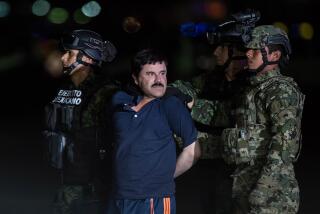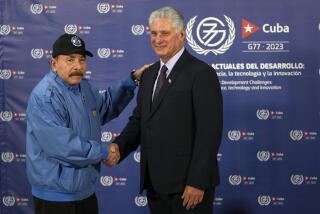Political Psychology Gives Nicaraguan Peace a Chance
- Share via
MEXICO CITY — The government of Nicaragua and the Contras are now engaged in the arduous process of fleshing out the details of last month’s agreement to end their seven-year-old war. As the negotiations move forward--slowly, as one would expect--the reasoning that probably led the Sandinistas to their most important political and diplomatic victory in years begins to emerge more clearly.
The Managua regime has always known that the Contras were burdened with two fatal weaknesses: total dependence on Washington and deep-rooted divisions within their ranks. The Contras continue to be a motley group led by men with disparate pasts and often conflicting purposes: Col. Enrique Bermudez and other former national guardsmen associated with the Somoza regime run military operations in the field; Adolfo Calero (and before him, Alfonso Robelo) is a businessman trying to form an acceptable-looking civilian political leadership; Alfredo Cesar (and before him, Arturo Cruz) exemplifies the moderate politicians and intellectuals who once supported the Sandinista revolution.
The only thing that has kept all of these factions more or less united has been American money and the war itself. As long as U.S. funding continued, Washington maintained enough leverage over the Contras to keep them in line and united. While the Sandinistas insisted on waging an exclusively military struggle against the U.S.-backed opposition, they contributed to the Contras’ unity and their strict adherence to U.S. policy. But the moment Congress suspended funding and the Sandinistas decided to open a political front against the Contras, the rebels’ weaknesses came to the fore.
The Contras cut the best deal they could at Sapoa because one of their factions was willing to do so and the others couldn’t afford to break ranks. In addition, the Contras signed because their margin of autonomy from the United States finally became operational.
Alfredo Cesar and other less important figures, probably with the backing andunder the influence of President Oscar Arias Sanchez of Costa Rica, decided that this was the best time for a deal, and that as the end of Ronald Reagan’s term in office approached, the balance of forces would become more unfavorable for the Contras. Others in the Contra leadership, particularly the ex-guard military commanders, clearly were unhappy with the agreement but understood that congressional approval of even so-called humanitarian aid depended on their acquiescence.
Similarly, despite obvious U.S. displeasure with the Sapoa meeting, the Contras exercised a degree of freedom of action with regard to the United States that everybody, including the Sandinistas, had underestimated.
The key to both shifts--the Contras’ division and their taking their distance from Washington--can be found in the Sandinistas’ decision to engage them politically, and no longer only militarily. This willingness on the part of Managua, while influenced by the congressional cut-off of funds, also came from the comandantes’ feelings that they have won the war, not from any doubts about their own political strength.
If the preceding analysis holds, then the near-term evolution of the talks between the Nicaraguan government and its still-not-so-loyal opposition will proceed along predictable lines. The more the war acquires political, rather than military, connotations, the greater the divisions among the Contras will be. Similarly, the United States will be less able to keep the Contras from accepting the legitimacy, reality and inevitability of Sandinista power in Nicaragua. And if the negotiations succeed, and at least part of the Contras are reincorporated into the Nicaraguan political process, the Sandinistas may be finally able to implement their “Mexican solution”: a fragmented opposition legitimizing a de facto, benign and flexible form of one-party rule. Not an ideal solution, from any vantage point, but a realistic and acceptable solution.
More to Read
Sign up for Essential California
The most important California stories and recommendations in your inbox every morning.
You may occasionally receive promotional content from the Los Angeles Times.









